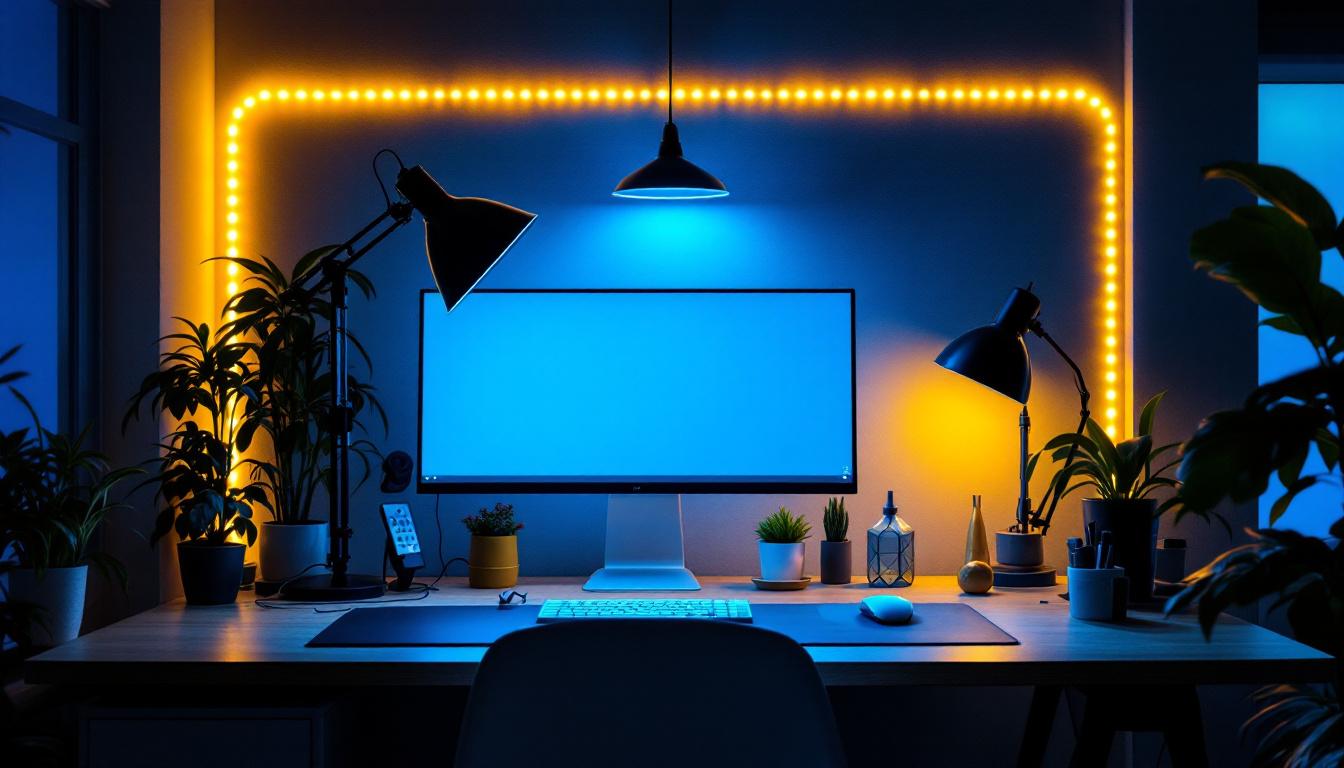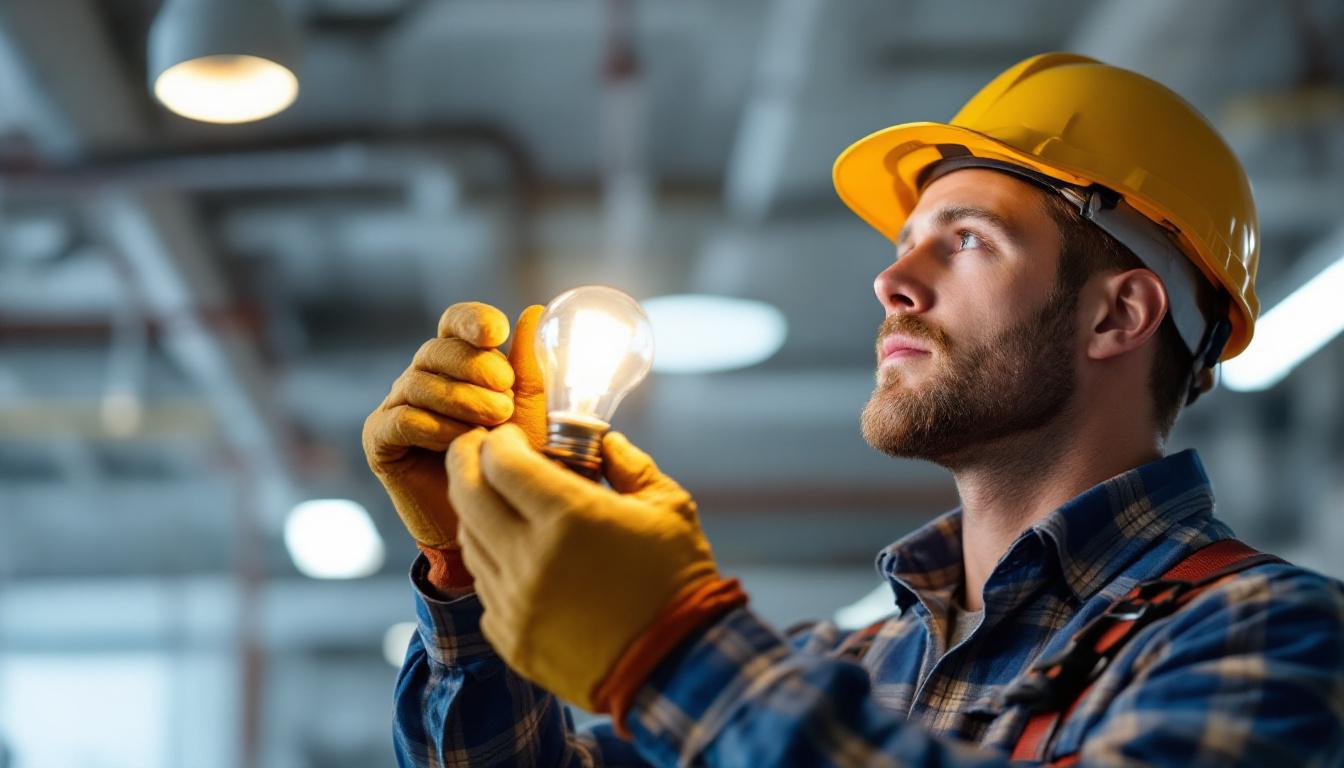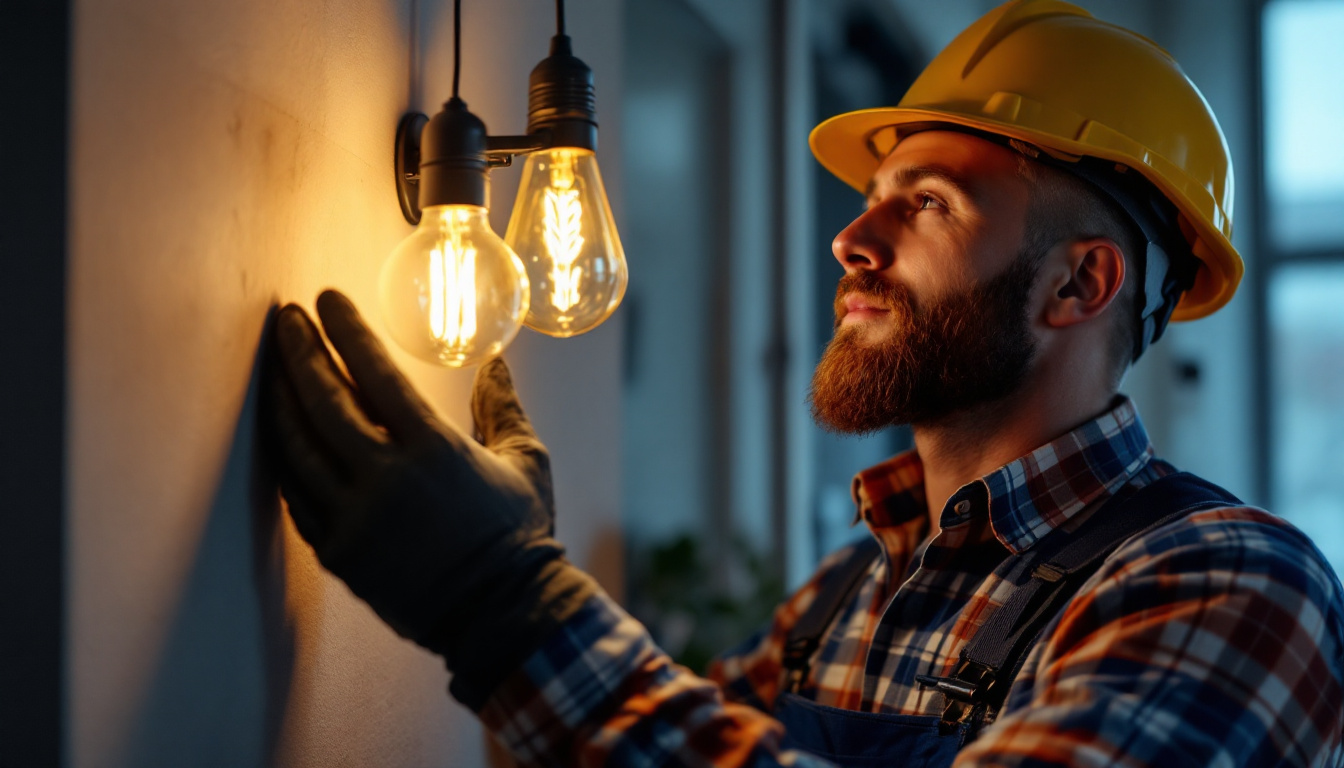
In the ever-evolving world of lighting design and installation, efficiency is paramount. As lighting contractors strive to create environments that are not only visually appealing but also energy-efficient, understanding the various aspects of lighting optimization becomes crucial. This article delves into the key strategies and technologies that can enhance lighting efficiency, ultimately leading to cost savings and improved sustainability.
Lighting efficiency refers to the amount of useful light produced per unit of energy consumed. This concept encompasses various factors, including the type of light source, the design of lighting systems, and the application of smart technologies. By grasping the fundamentals of lighting efficiency, contractors can make informed decisions that benefit both their clients and the environment. Moreover, as energy costs continue to rise and sustainability becomes a priority, understanding lighting efficiency is not just beneficial but essential for modern construction and renovation projects.
In addition to energy savings, efficient lighting can enhance the overall quality of a space. Well-designed lighting can improve visibility, reduce eye strain, and create an inviting atmosphere. This is particularly important in commercial settings, where the right lighting can influence customer behavior and employee productivity. As such, contractors should consider not only the technical aspects of lighting efficiency but also the psychological and aesthetic impacts that lighting can have on occupants.
At the core of lighting efficiency lies the relationship between lumens and watts. Lumens measure the total amount of visible light emitted by a source, while watts indicate the energy consumed. The goal is to maximize lumens while minimizing watts. For example, LED lighting has made significant strides in this area, providing high lumen output with low energy consumption. Understanding this relationship allows contractors to recommend lighting solutions that not only meet aesthetic needs but also promote energy conservation. Furthermore, the shift towards smart lighting systems, which can adjust brightness based on occupancy or natural light levels, further enhances this efficiency, allowing for dynamic control over energy use.
In practical terms, this means that a well-informed contractor can guide clients towards lighting options that align with their specific needs—whether it’s for a cozy residential setting or a high-traffic commercial space. By leveraging the latest technologies and understanding the nuances of lumens and watts, contractors can create tailored solutions that maximize both functionality and energy savings, ultimately leading to lower utility bills and a reduced carbon footprint.
Different light sources have varying efficiencies. Traditional incandescent bulbs, while warm and inviting, consume more energy compared to modern alternatives like LEDs and CFLs. When evaluating light sources, it is essential to consider their efficacy, lifespan, and color rendering index (CRI). By prioritizing energy-efficient options, contractors can ensure that their projects are both cost-effective and environmentally friendly. Additionally, the choice of light source can significantly impact the maintenance costs associated with a project; longer-lasting bulbs reduce the frequency of replacements and the associated labor costs.
Moreover, the advancements in lighting technology have led to a wider range of options that cater to specific needs. For instance, tunable white LEDs allow users to adjust the color temperature of the light throughout the day, mimicking natural sunlight and supporting circadian rhythms. This feature is particularly beneficial in workplaces and healthcare settings, where lighting can influence mood and well-being. By staying informed about these innovations, contractors can provide clients with comprehensive solutions that not only meet their immediate lighting needs but also enhance the overall experience within the space.
Effective lighting design goes beyond merely choosing the right fixtures. It involves a comprehensive approach that considers the layout, purpose, and specific needs of the space. A well-designed lighting system can significantly enhance efficiency and user experience.
Incorporating natural light into a lighting design can dramatically reduce energy consumption. Strategies such as strategically placed windows, skylights, and light tubes can maximize daylighting. This not only decreases reliance on artificial lighting but also creates a more inviting atmosphere. Contractors should assess the orientation of the building and the surrounding environment to optimize natural light usage.
Layered lighting involves combining different types of lighting—ambient, task, and accent—to create a balanced and functional environment. By carefully planning the placement and intensity of each layer, contractors can enhance both the aesthetic appeal and efficiency of the lighting system. This approach allows for flexibility, enabling users to adjust lighting levels based on their needs, thereby reducing energy consumption during off-peak times.
The advent of smart lighting technologies has revolutionized the way lighting systems are managed and controlled. These innovations offer contractors the opportunity to enhance efficiency through automation and intelligent design.
Motion sensors, daylight sensors, and occupancy sensors are integral components of smart lighting systems. These devices automatically adjust lighting levels based on occupancy and natural light availability. For example, motion sensors can turn lights off in unoccupied areas, while daylight sensors can dim or brighten fixtures depending on the amount of natural light present. By integrating these technologies, contractors can create systems that significantly reduce energy waste.
Smart lighting controls allow users to manage their lighting systems remotely, providing convenience and efficiency. Programmable timers, mobile apps, and voice-activated systems enable users to customize their lighting schedules and preferences. This level of control not only enhances user experience but also optimizes energy usage. Contractors should consider recommending these systems to clients looking to improve their lighting efficiency.
Staying compliant with energy codes and regulations is essential for lighting contractors. These guidelines are designed to promote energy efficiency and reduce environmental impact. Understanding local codes and standards can help contractors design and implement lighting systems that not only meet legal requirements but also exceed client expectations.
Each region may have specific energy codes that dictate the minimum efficiency standards for lighting installations. Familiarizing oneself with these codes is crucial for ensuring compliance and avoiding potential penalties. Contractors should regularly review updates to local regulations and adapt their practices accordingly. This proactive approach not only fosters compliance but also positions contractors as knowledgeable professionals in the field.
Energy Star is a widely recognized certification that signifies a product’s energy efficiency. By incorporating Energy Star-rated products into lighting designs, contractors can enhance their credibility and appeal to environmentally conscious clients. These products often exceed the minimum efficiency standards set by energy codes, providing an added layer of assurance for both contractors and clients.
As technology and standards evolve, ongoing training and education for lighting contractors are vital. Staying informed about the latest trends, products, and techniques can significantly impact a contractor’s ability to deliver efficient lighting solutions.
Workshops and seminars provide valuable opportunities for contractors to learn from industry experts and network with peers. These events often cover a range of topics, from new lighting technologies to design best practices. By actively participating in these educational opportunities, contractors can enhance their skills and stay ahead of the competition.
The digital age has made it easier than ever for contractors to access educational resources. Online courses, webinars, and certification programs offer flexible learning options that can be tailored to individual schedules. Pursuing certifications in energy-efficient lighting design or smart technologies can further establish a contractor’s expertise and commitment to best practices.
Educating clients about the benefits of efficient lighting is an essential aspect of a contractor’s role. By fostering a collaborative relationship, contractors can guide clients toward making informed decisions that align with their goals and values.
When discussing lighting options with clients, it is crucial to communicate the long-term benefits of energy-efficient solutions. These benefits include reduced energy bills, lower maintenance costs, and a smaller carbon footprint. By highlighting these advantages, contractors can help clients understand the value of investing in efficient lighting systems.
Every client has unique needs and preferences. Taking the time to understand these requirements allows contractors to propose tailored lighting solutions that maximize efficiency while meeting aesthetic and functional goals. This personalized approach not only enhances client satisfaction but also fosters long-term relationships built on trust and expertise.
Once a lighting system is installed, measuring and analyzing its performance is crucial for ensuring ongoing efficiency. This process involves evaluating energy consumption, light levels, and user satisfaction.
Energy monitoring tools enable contractors to track energy usage and identify areas for improvement. By analyzing this data, contractors can make informed recommendations for adjustments or upgrades that enhance efficiency. Regular monitoring also allows for proactive maintenance, ensuring that lighting systems operate at peak performance.
User feedback is invaluable in assessing the effectiveness of a lighting system. Engaging with clients and end-users to gather their insights can provide contractors with a deeper understanding of how the lighting performs in real-world conditions. This feedback can inform future projects and help contractors refine their approaches to lighting design and installation.
Optimizing lighting for maximum efficiency is a multifaceted endeavor that requires a comprehensive understanding of technology, design, and client needs. By focusing on energy-efficient light sources, smart technologies, and effective design strategies, lighting contractors can create solutions that not only meet the demands of modern spaces but also contribute to a more sustainable future.
As the industry continues to evolve, staying informed and engaged with the latest trends and technologies will be essential for contractors looking to excel. By prioritizing education, compliance, and client engagement, lighting contractors can position themselves as leaders in the field, driving the shift toward more efficient and effective lighting solutions.
Ready to bring unparalleled efficiency and sustainability to your lighting projects? At LumenWholesale, we provide you with the high-quality, spec-grade lighting products you need at prices that can’t be beaten. Say goodbye to unnecessary markups and hello to a vast selection of industry-standard lighting solutions. With free shipping on bulk orders, you can trust that you’re getting premium value without hidden costs. Elevate your lighting game and make your next project shine with Wholesale Lighting at the Best Value from LumenWholesale.

Discover essential 277 Volt LED bulb tips for lighting contractors to optimize installations, save energy, and ensure safety. Boost your expertise—read now!.

Discover the essential role of Type B lamp bulbs in modern lighting projects.

Discover why LED shops are a game-changer for lighting contractors.

Discover the ultimate guide to LED light bulb sizes and illuminate your space with confidence.